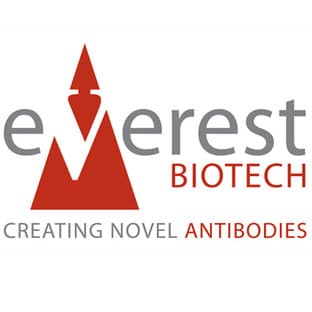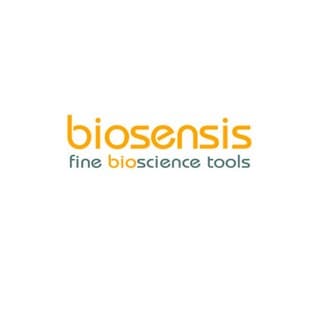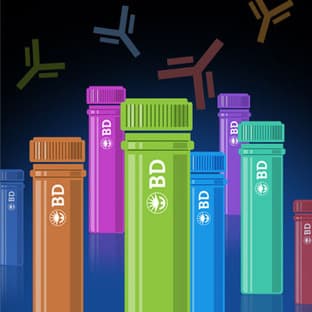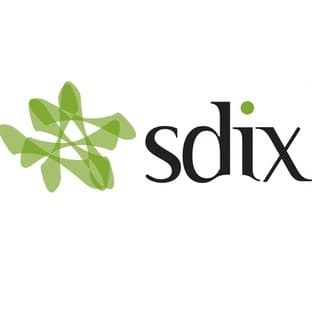
Supplier:
Boster ImmunoleaderCat no: PA2236
Polyclonal Anti-IRAK2
Prices direct from Boster Immunoleader
Quick response times
Exclusive Absave savings/discounts
SPECIFICATIONS
Price
200.00 USD
Catalog Number
PA2236
Size
100?g/vial
Applications
IHC, WB
Reactivities
Hum, Mouse, Rat
Form
lyophilized
Format
Each vial contains 5mg BSA, 0.9mg NaCl, 0.2mg Na2HPO4, 0.05mg Thimerosal, 0.05mg NaN3.
Gene Id
IRAK2
References
1. Conner, J. R., Smirnova, I. I., Poltorak, A. A mutation in Irak2c identifies IRAK-2 as a central component of the TLR regulatory network of wild-derived mice. J. Exp. Med. 206: 1615-1631, 2009. \n2. Lin, S.-C., Lo, Y.-C., Wu, H. Helical assembly in the MyD88-IRAK4-IRAK2 complex in TLR/IL-1R signalling. Nature 465: 885-890, 2010.\n3. Muzio, M., Ni, J., Feng, P., Dixit, V. M. IRAK (Pelle) family member IRAK-2 and MyD88 as proximal mediators of IL-1 signaling. Science 278: 1612-1615, 1997.\n
Swiss Prot
O43187
Storage Temp
At -20 degree C for one year. After reconstitution, at 4 degree C for one month. It can also be aliquotted and stored frozen at -20 degree C for a longer time.Avoid repeated freezing and thawing.
Additional Info
A synthetic peptide corresponding to a sequence at the C-terminus of human IRAK2, different from the related rat sequence by one amino acid, and from the related mouse sequence by three amino acids.
Scientific Background
Interleukin-1 receptor-associated kinase-like 2 is an enzyme that in humans is encoded by the IRAK2 gene. This gene is mapped to 3p25.3. IRAK2 encodes the interleukin-1 receptor-associated kinase 2, one of two putative serine/threonine kinases that become associated with the interleukin-1 receptor (IL1R) upon stimulation. IRAK2 is reported to participate in the IL1-induced upregulation of NF-kappaB. It binds to the IL-1 type I receptor following IL-1 engagement, triggering intracellular signaling cascades leading to transcriptional up-regulation and mRNA stabilization.
More from Boster Immunoleader
Applications
WB
Reactivities
Hum
Applications
ELISA, WB
Reactivities
Hum
Applications
ELISA, IHC, WB
Reactivities
Hum
Applications
ELISA, WB
Reactivities
Mouse
Applications
ELISA, IHC, WB
Reactivities
Rat
Applications
BNI, ELISA, IHC, IP, WB
Reactivities
Mouse
Conjugates
Unconj, Agarose, AP, Biotin, Gold, HRP, BE, GE, YE, OE, RE, FRE, NIR, ONFC
Applications
BNI, ELISA, IHC, IP, WB
Reactivities
Rat
Latest promotions
Buy any polyclonal or monoclonal antibody from our extensive range of pre-made antibodies and for a limited time only receive a $50 discount!(T&C apply:...
New brilliant antibodies, and new lower prices!For flow cytometry reagents in general, \"bright is better.\" The violet-excitable BD Horizon™ BV421 and...
10% Discount on 2 Rabbit Polyclonal Antibody Service. With over 20 years experience, SDIX has developed into the premier US custom antibody producer,...
For the past decade scientists have extensively used ATS secondary toxin conjugates to make their own targeted toxins for in vitro use.The ability to combine...
We're so sure that you'll prefer Cayman Assay kits over your present brand that we're willing to give you a free assay kit to prove it!
Did your supplier increase the price of Fetal Bovine Serum? Did they substitute the US Origin with USDA? Well say no more! Innovative Research is still...
Bulk Cytokines with Custom Vialing.20 - 50% off cytokines, growth factors, chemokines and more...For a limited time Cell Sciences is offering substantial...
Are you planning to have a customised antibody made for your research?Since 2000, Everest has been producing a catalog containing thousands of affinity...
Top suppliers
Agrisera AB
11 products
Biotrend
Biosensis
969 products
ABBIOTEC
3011 products
SDIX
1 products
Spring Bioscience
2291 products
Cell Signaling Technology
4976 products
Rockland Immunochemicals, Inc.
7592 products
Boster Immunoleader
1533 products
OriGene Technologies Inc.
5281 products
Maine Biotechnology Services
227 products
BD (Becton, Dickinson and Company)
1 products
ABNOVA CORPORATION
Randox Life Sciences
1502 products















